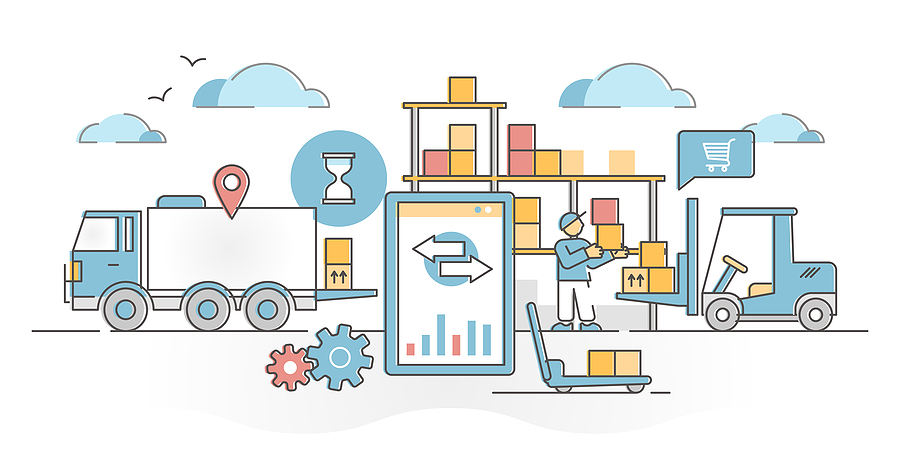
How Businesses Implement AI-Driven Demand Planning in Supply Chains
Factors ranging from the weather to celebrities’ social media posts can spur the public’s demand for particular products. Those spikes can cause supply chain constraints company leaders aim to avoid. It is better when corporate teams can predict what people will want and get those products far enough in advance to cater to everyone wishing to buy them. To achieve this, businesses are using AI to strengthen their supply chains. Here’s how…
Managing Demand While Selling Diverse Product Assortments
Demand planning is especially complicated when retailers sell huge varieties of goods within a large category. Such was the case with one of Canada’s largest electronics retailers. People go there to purchase everything from phone chargers to televisions.
However, the demand for those two examples is very different. Many consumers buy several phone chargers per year, such as if they want one for each main room in a home or have forgotten to pack the item before going on a trip. However, most TVs last several years, and people only buy them once the ones they have break or otherwise no longer meet their needs. Plus, many shoppers are more likely to buy those big-ticket items during the holiday season than at other times.
The Canadian retailer uses AI and machine learning technologies to get data-driven demand insights that shape inventory and supply-chain-related decisions. Its leaders have already noticed several benefits. For example, demand planning has become more automated, and those involved can receive detailed reports highlighting potential business risks and impacts.
Additionally, supply chain employees can address slow-moving inventory, plan more enticing promotional offers and reduce stockouts. Another aspect of the AI solution evaluates various supply chain scenarios and gives prescriptive recommendations to prevent unwanted consequences. These examples show how AI can support workers in their roles and increase productivity.
A common misconception about AI is that it will replace human staff. One study found job loss from automation and other advanced technologies was a worry for 42% of respondents. However, besides assisting them with the tasks they already know, artificial intelligence can expand their skills, encouraging them to use new platforms and tools that make demand planning easier.
Streamlining Demand Planning Processes for Better Productivity
Demand planning processes vary depending on what the brand sells, the size of its supplier network, its budget and more. However, no matter how organizations handle them currently, AI can pinpoint opportunities to streamline the work for better overall outcomes.
One example comes from a multinational consumer goods enterprise offering diapers, detergent, personal grooming products and other household staples. Leaders hoped to improve current demand planning by bringing artificial intelligence into the workflow. Initial data inputs for the project included bill-of-materials information for 5,000 products and 22,000 components. Additionally, users imported various types of supporting supply chain details into the system, including specifics about vendors, warehouses and manufacturing plants.
The technology then compiles all that information to give real-time or trend-based insights. Besides providing live inventory data, the AI product can generate supply projection reports that indicate future needs while highlighting possible supply chain disruptions. Knowing about potential issues sooner gives employees the information to act confidently and prevent or mitigate those problems.
The tool was also a significant productivity booster for the consumer goods firm. For example, supply chain queries used to take more than two hours to complete but now occur immediately. Additionally, although it formerly needed more than 10 people to verify the data, the technology can do that without human oversight. Such improvements substantiate studies showing AI can make people 20%-45% more productive depending on various factors.
Running Supply Chain Simulations Before Key Events
Even though some periods of increased demand are impossible to predict, most supply chain managers can anticipate others with near certainty. For example, Black Friday is one of the biggest shopping days of the year in the United States. Additionally, late summer drives sales of bedding sets, reasonably priced furniture and school supplies as students prepare for college.
Demand planning is essential for giving supply chain professionals the necessary information to source and move the products customers will want most during those hectic periods. Since artificial intelligence can process large quantities of information quickly, users could feed details such as social media mentions, customer service email or chat data, and sales figures into tools to determine which factors make some products more or less desirable.
The leaders of one multinational American retailer used AI to determine what customers would want before Black Friday arrived. The goal was to learn those details before shoppers even consciously expressed a desire to buy specific items. While using the artificial intelligence platform, retail staff entered data about shopping and customer trends, seasonal factors and more. The resulting output steered supply chain decisions and helped address issues that might ordinarily cause Black Friday disruptions.
The retailer has also added AI to its daily supply chain workflows, relying on the technology to anticipate demand cycles and unexpected traffic peaks. Some businesses use complementing technologies such as digital twins to get similar results. These tools enable people to predict bottlenecks and investigate potential actions before pursuing them in real life.
Making Demand Planning More Manageable
Demand planning is tricky and requires a thoughtful approach from people who combine their expertise with trustworthy data. However, these examples show how purposeful AI applications can assist with this all-important aspect of supply chain operations, increasing the likelihood of satisfied customers and profit.
*This article is written by Jack Shaw. Jack is a seasoned automotive industry writer with over six years of experience. As the senior writer for Modded, he combines his passion for vehicles, manufacturing and technology with his expertise to deliver engaging content that resonates with enthusiasts worldwide.





